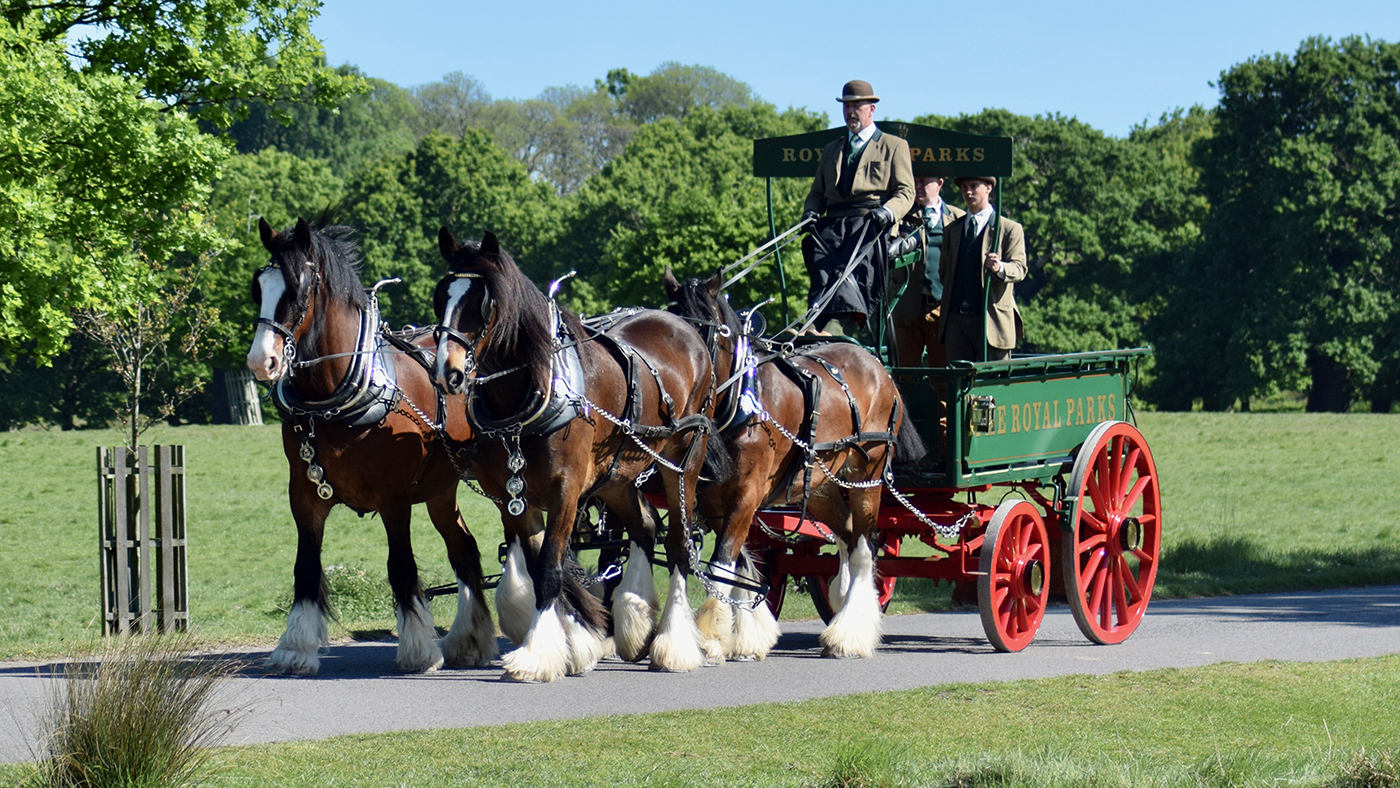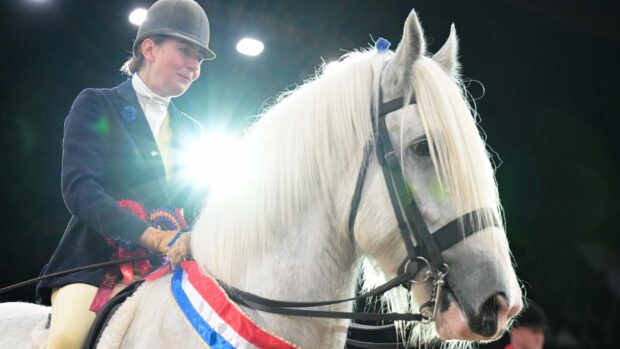Every November at Hampton Court Palace, visitors can witness Her Majesty’s chaplain blessing London’s last herd of working Shires prior to evensong. It’s nice to imagine that ‘All things bright and beautiful’ is then sung, but while God is supposed to love all creatures great and small, these gentle giants more than deserve any divine favouritism.
The herd of seven is owned by Operation Centaur, which was set up by Dr Andreas Liefhooge 15 years ago.
“It was set up with the aim of making working horses relevant to contemporary society,” he explains, which is particularly important as Shires are rarer than pandas (and greys especially rare, with only 150 left). This multi-talented herd can turn their hooves to three strands of work.

The first is carriage rides. In the summer they pull a horse-drawn tram around Hampton Court Palace gardens, and in the winter give carriage rides around Richmond Park to raise money for the charity Royal Parks (and the winter season has just started for those of you looking for Christmas ideas).
The second task is conservation work. A growing number of London councils use these Shires to maintain their wildflower meadows. The Shires harrow, scarify and mow the likes of Clapham Common, Hyde Park, Richmond Park, Sutton Common and Morden Hall Park to suppress grass that would leave less room for wildflowers if unchecked.

“We’re not about harking back to some distant past,” Liefhooge is keen to point out. “We’ve been able to show that if you use horses on wildflower meadows you get more flowers and a greater variety, because tractors compress the soil and wildflowers don’t like compressed soil.”

Plus, as Dr Iain Boulton, a Lambeth Council Officer, states, there are “significant environmental benefits of using them over powered equipment like tractors”. The council worked out the carbon emissions from a tractor would be far greater than the horse van to get the Shires to and from their home at Home Park. Boulton is certain the Shires “are and will remain” a valuable tool for councils. Other conservation tasks you can see these Shires turning to are bracken rolling and logging.

Last but by no means least — these Shires are used for equine-assisted psychotherapy. They have worked with the homeless, troubled teenagers, soldiers with PTSD, and even gone into prison.
“It’s easier to do a psychotherapy intervention when a horse is present than to just sit these people down in a room and say ‘well tell me about yourself’,” Liefhooge says. By connecting with an animal that doesn’t speak, they learn to connect more with themselves and thus open up. Plus, “Shire horses are the biggest horses in the world — if someone has low self-esteem, and sees they can have an impact on these horses, the results are incredible”.

They also have caused unexplained health ‘miracles’. One client suffered badly from the skin condition psoriasis and started to empathise deeply with one of the Shires, Murdoch, who suffers from sweet itch. After looking after Murdoch meticulously, his own skin condition vanished.
All of the herd can do all the tasks set them, although the older ones are better for therapy work. Operation Centaur acquires the Shires around three or four years of age from trusted breeders “in the north” with a preference for geldings as they are “more biddable” (there is one mare in the herd), and trains them from scratch, a process which can take around a season or longer.

Thanks to this busy work life the herd don’t look like show Shires: “if you look at show Shires, they often carry a bit more weight — all our Shires have ‘six packs’, they are total athletes,” says Liefhooge proudly.
Athletes, therapists, carriage drivers, and conservators. London is blessed to have them.
Article continues below…
You might also be interested in:
Meet the team
Massey — 18.3hh, six years old, bay
Head of the herd
Murdoch — 17.2hh, 12 years old, bay
Second in command. Once almost died of colic and had 29ft of small intestine removed
Heath — 18.3hh, three years old, grey
Hates being fussed, just wants to get on with the job, can be ridden
Tom – 19hh, 11 years old, bay
Thinks Massey is a god and is a born worrier, can be ridden
Joey – 17.2hh, 10 years old, bay
The smallest but bravest
Nobby — 18.3hh, nine years old, grey
Dislikes other horses and prefers to be around people. Particularly good at logging as he enjoys the one-to-one work with humans
Bess – (currently) 16.2hh, four years old, grey
The herd’s first Shire mare and causes quite a stir among the boys. Due to foal in July 2020
Aragon – passed away aged 25 on 21 November 2019
The senior horse of the herd who was a veteran who could turn his hoof to any task and did so for nearly two decades.
Would you like to read Horse & Hound’s independent journalism without any adverts? Join Horse & Hound Plus today and you can read all articles on HorseandHound.co.uk completely ad-free



